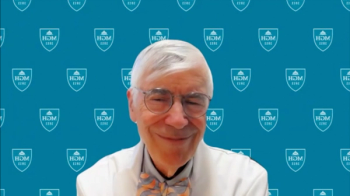
Systolic, Diastolic BP Both Predict Cardiovascular Events, Kaiser Permanente Study Finds
The findings support 2017 guidelines from the American College of Cardiology and the American Heart Association to more aggressively treat high blood pressure.
Systolic and diastolic blood pressure (BP) can both predict heart attacks and strokes, and both must be managed in patients with hypertension, according to a new study based on health records from 1.3 million people.
The findings, published today in the New England Journal of Medicine,1 draw on 8 years’ worth of records from Kaiser Permanente of Northern California. According to the study’s lead author, Alexander C. Flint, MD, PhD, Kaiser’s research division examined data to answer a question that has come up frequently in recent years: can cardiovascular (CV) events be prevented by managing systolic BP alone, or do both need attention?
As Flint explained in an interview with The American Journal of Managed Care®, the pendulum had swung in favor of focusing on systolic BP, which was the focus of
But does controlling diastolic BP not matter? “It wasn’t the case,” Flint said. “Both systolic and diastolic blood pressure are strongly linked to heart attack and stroke,” and although the relationship is different, primary care physicians must pay attention to both, he said.
Findings published today showed that although elevated systolic BP had a greater effect on outcomes than high diastolic BP, both systolic and diastolic BP “independently influenced the risk of adverse cardiovascular events, regardless of the definition of hypertension,” the authors wrote, which means that their conclusions held up whether BP was defined as 140/90 mmHg or 130/80 mmHg.
This is significant, because in November 2017 the American College of Cardiology (ACC) and the American Heart Association (AHA) adopted new, more aggressive guidelines for treating BP, which were not universally embraced.2 The new guidelines, based on SPRINT, say stage 1 hypertension begins at 130/80 mmHg, while stage 2 begins at 140/90 mmHg.
In the study, the burden of systolic and diastolic BP each independently predicted adverse outcomes, which were measured in a composite score of myocardial infarction, ischemic stroke, and hemorraghic stroke, while controlling for demographic factors and comorbidities. (Death was not a primary outcome.)
Flint said transmitting this message into primary care will be easier in an integrated health system like Kaiser Permanente than it might be in other health systems, but he anticipates clinicians will act on this knowledge relatively quickly. “For some, there was a concern that the change in the guidelines was made too soon; that it was based on 1 randomized controlled trial,” he said.
The data from SPRINT was quite robust, Flint said, but having it confirmed through an observational study with data from 1.3 million adults and more than 44,000 events should increase comfort with the change in the guidelines.
The chief lesson, he said, is that physicians must be aggressive about diagnosing and treating hypertension. “It’s both recognizing people at higher risk, and the need to strictly control hypertension, and recognizing the need to control both systolic and diastolic blood pressure,” Flint said. “The concern is that the focus is on the systolic—although we talk about a target for diastolic, it’s not attended to as diligently. We really need to do a better job of paying attention to both targets.”
As to whether physicians should make more use of CV biomarkers, Flint said cost-effectiveness is a major consideration. The ACC publishes an online tool for patients without diagnosed atherosclerotic cardiovascular disease (ASCVD) called the
References
- Flint AC, Conell C, Ren X, et al. Effect of systolic and diastolic blood pressure on cardiovascular outcomes. N Engl J Med. 2019;381:243-251. doi: 10.1056/NEJMoa1803180.
- Whelton PK, Carey RM, Aronow WS, et al. 2017 ACC/AHA/AAPA/ABC/ACPM/APhA/ASH/ASPC/PCNA guideline for the prevention, detection, evaluation and management of high blood pressure in adults: a report of the American College of Cardiology/American Heart Association Task Force on Clinical Practice Guidelines. Hypertension. 2018;71(6):e13-e115. doi: 10.1161/HYP.0000000000000065.
Newsletter
Stay ahead of policy, cost, and value—subscribe to AJMC for expert insights at the intersection of clinical care and health economics.





























































